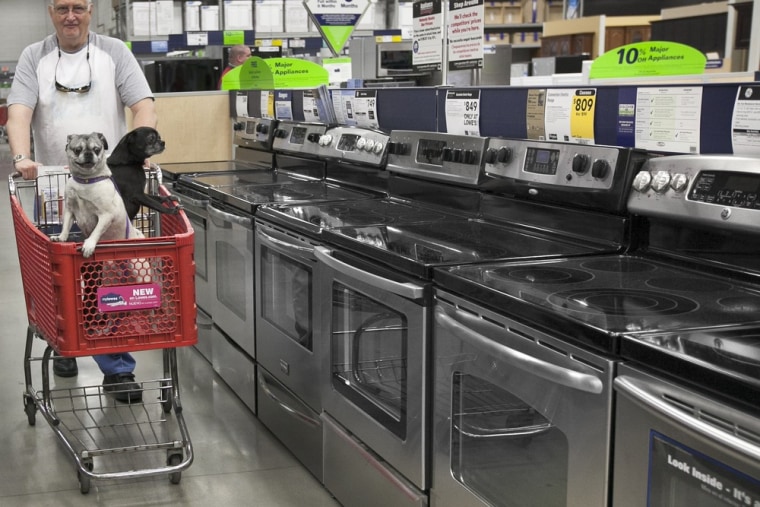Buying an energy-efficient appliance is a regular tip for cutting energy bills. The new twist: picking an appliance that uses a different kind of fuel.
Consumers haven't exactly been clamoring for natural gas appliances. Market share for gas-powered furnaces, water heaters and clothes dryers has declined slightly since 2003, according to 2013 figures from the American Gas Association. Ownership of gas ranges has held steady.
But experts think that could change in the near future. More than a third of U.S. consumers have expressed interest in switching to gas appliances from electric, according to a new study released Thursday from consulting firm Accenture. They surveyed 11,154 consumers in 21 countries in December 2012, including 1,020 Americans.
According to the survey, 38 percent of Americans are considering switching to a gas range or water heater, 37 percent to a gas furnace and 30 percent to a gas clothes dryer.
(Read More:Clean Energy to Run Past Nuclear, Gas by 2016: IEA)
The motivation: savings.
"Depending on the market, natural gas prices can be substantially less than other fuels," said Greg Guthridge, the head of Accenture's Energy Consumer Services group.
For example, homeowners could save $1,698 a year using a gas furnace versus an electric one, according to Wisconsin Public service, a utility that offers both kinds of fuel. Annual savings from using a gas range could tally $79; a clothes dryer, $81; and a water heater, $297.
A production surge prompted a decline in natural gas prices last year, to an average $10.66 per thousand cubic feet from $11.03, according to the Energy Information Administration. (Some of that increase stemmed from increased use of techniques such as hydraulic fracturing, or fracking.)
Prices are expected to stay fairly flat through 2014, said Angelina LaRose, team leader for natural gas markets analysis at the Energy Information Administration. Even though production costs could result in prices' nearly doubling by 2040, the EIA's long-term forecast calls for natural gas to be "far less expensive" than energy produced from oil, including electricity.
(Read More:Automakers in High Gear for Summer Car Deals)
In the kitchen, there's some evidence the switch isn't entirely cost-related.
Jim Kabel, a certified remodeler with Case Design/Remodeling in San Jose, Calif., said he's seen an uptick in gas conversions as consumers remodel to include chef-worthy kitchens.
"Gas tends to be the preferred cooking method, for its fine degree of control," he said.
If the reason for the purchase is savings, they may not be immediate—particularly for kitchen and laundry appliances—as prices for gas appliances are typically higher. LG's Smart ThinQ electric clothes dryer is $1,599; the gas model is $1,699. A GE Profile 30" convection range has a wider gap, with Sears selling an electric version for $1,080 and a gas one for $1,800.
There's also the cost of installing a gas line. Homes dating to the 1970s and earlier often don't have one, according to Kabel. Even newer homes may have a gas line in the laundry room or utility area, but not the kitchen.
(Read More:Hot Summer May Make Consumers Sweat Over A.C. Bills)
Adding a gas line can cost $1,500 to $3,000, he said. The distance from the gas meter to where the appliance will be installed, the size of the line and work required can also influence cost.
"If you're very close by to where the gas meter is or where an existing line can be tapped off of, it can be less expensive," Kabel said.
Some utilities are offering rebates to help consumers offset the expense of the changeover.
For example, Puget Sound Energy in Washington offers a rebate of up to $3,550 for customers who switch their home and water heating to natural gas. Pennsylvania-based utility PECO offers customers up to $500 for converting to a natural gas heating system, a discount on the cost of installing a gas line and financing plans.
Federal tax credits may also apply. As part of the $500 tax credit for energy-efficient projects, which expires Dec. 31, homeowners can claim $150 of the cost to install a qualifying gas (or propane or hot water) hot water boiler, and $150 for a qualifying gas (or propane or oil) furnace.
—By CNBC.com's Kelli B. Grant. Follow her on Twitter @KelliGrant.
